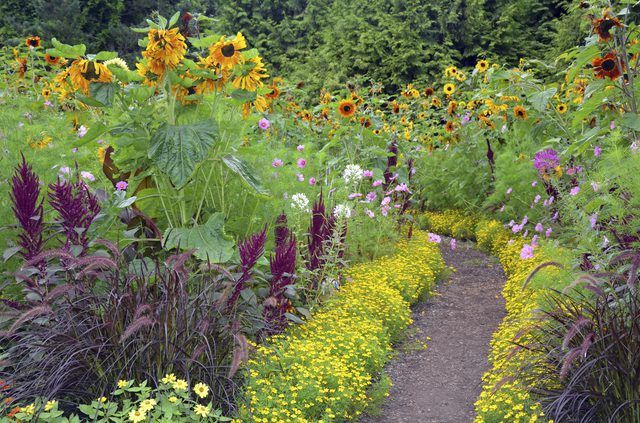Bulbs
Flower Basics
Flower Beds & Specialty Gardens
Flower Garden
Garden Furniture
Garden Gnomes
Garden Seeds
Garden Sheds
Garden Statues
Garden Tools & Supplies
Gardening Basics
Green & Organic
Groundcovers & Vines
Growing Annuals
Growing Basil
Growing Beans
Growing Berries
Growing Blueberries
Growing Cactus
Growing Corn
Growing Cotton
Growing Edibles
Growing Flowers
Growing Garlic
Growing Grapes
Growing Grass
Growing Herbs
Growing Jasmine
Growing Mint
Growing Mushrooms
Orchids
Growing Peanuts
Growing Perennials
Growing Plants
Growing Rosemary
Growing Roses
Growing Strawberries
Growing Sunflowers
Growing Thyme
Growing Tomatoes
Growing Tulips
Growing Vegetables
Herb Basics
Herb Garden
Indoor Growing
Landscaping Basics
Landscaping Patios
Landscaping Plants
Landscaping Shrubs
Landscaping Trees
Landscaping Walks & Pathways
Lawn Basics
Lawn Maintenance
Lawn Mowers
Lawn Ornaments
Lawn Planting
Lawn Tools
Outdoor Growing
Overall Landscape Planning
Pests, Weeds & Problems
Plant Basics
Rock Garden
Rose Garden
Shrubs
Soil
Specialty Gardens
Trees
Vegetable Garden
Yard Maintenance
Keeping a Garden Path Free of Weeds
Use weed-inhibiting measures when installing your pathway, and control weeds that do grow by pulling them, using organic herbicides or planting herbs.
When you're installing a garden path, you can incorporate weed control measures that might keep your path weed-free for many years. Weeds are essentially plants and flowers growing where you don't want them to, and they are unpredictable. The ground is laced with seeds, and as soon as rain and foot traffic wear away enough topsoil, those seeds that can receive sunlight will sprout. So whether you're installing a pathway or inheriting one, a certain amount of weed maintenance is inevitable.

Constructing a Weed-Resistant Pathway
Undertaking a few extra tasks when preparing the ground for your pathway can inhibit weed growth for many years.
Things You'll Need
Sand
Drainage rock
Rake
Plate compactor
Step edger
Landscape fabric
Step 1
Dig the path deep enough to accommodate a 2-inch or thicker layer of sand or drainage rock underneath the path covering.
Step 2
Level the soil with a rake, and then compact it with plate compactor. Compacting the soil not only creates a stable, level surface for paving stones, gravel, mulch or whatever covering you choose, but it also makes it more difficult for weeds to take root.
Step 3
Edge the path to separate it from the surrounding landscape, using a step edger. Creating a discrete boundary reduces the possibility of weeds crossing from the garden or lawn and rooting under the pathway.
Step 4
Install a layer of landscape fabric under a gravel or mulch pathway. The fabric eventually breaks down, but until it does, it effectively deprives weeds of the sunlight and oxygen they need to grow. Be sure to extend the fabric up an inch along the pathway edges as further insurance against weed growth there.
Regular Maintenance
As your pathway ages, weeds will eventually take hold, no matter how many preventive measures you took when installing it. Weeds grow in the cracks between paving stones and in the layer of organic matter that develops under mulch or gravel. Keeping weeds under control takes a certain amount of manual labor, but chemicals can help. Because it's a pathway, a commercial weed killer that wouldn't be safe for your garden may be appropriate, but try a non-toxic mix of household chemicals first. It may be all you need.
Things You'll Need
Gardener's gloves
Kitchen fork
Organic herbicide
Vinegar
Table salt
Dish soap
Garden sprayer
Step 1
Put on a pair of gardener's gloves and pull weeds manually. If your pathway has been conructed with weed control in mind, the roots won't be deep, so this task won't be as difficult as it is in the garden, especially if you do it after a heavy rain. Use a kitchen fork to dig between pavers and into gravel and hook onto roots, but disturb the soil as little as possible. Overturned soil potentially exposes more seeds to sunlight.
Step 2
Spray the pathway with an organic herbicide. Choose a product made from citrus peel oil, a soap made with natural fatty acids or a vinegar weed killer featuring a 20 percent concentration of acetic acid -- as opposed to the 5 percent concentration in household vinegar. You can also make your own herbicide with household vinegar; mix it with table salt -- a natural desiccant -- and dish soap to help the solution stick to leaves. Apply the solution with a garden sprayer.
Step 3
Plant useful herbs, such as peppermint (Mentha x piperita) -- hardy in U.S. Department of Agriculture plant hardiness zones 3 to 11 -- along the edges of the path in areas where weeds are most problematic. Well-managed herbs deprive weeds of space and nutrients while providing you with tonic teas and tastier salads.
Tip
For additional methods of dealing with walkway weeds, see How to Prevent Weeds in Stone Pathways.